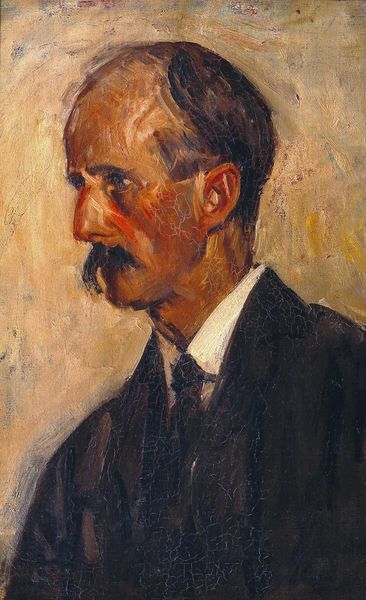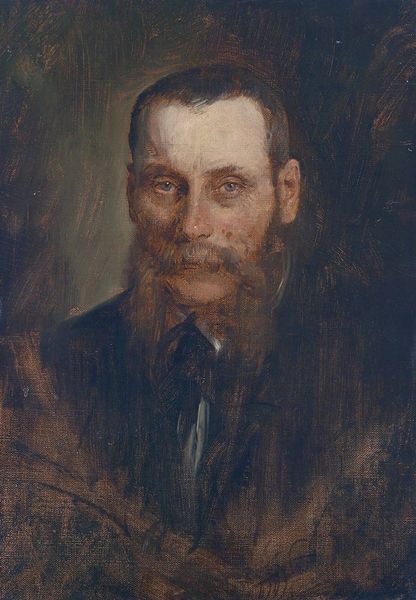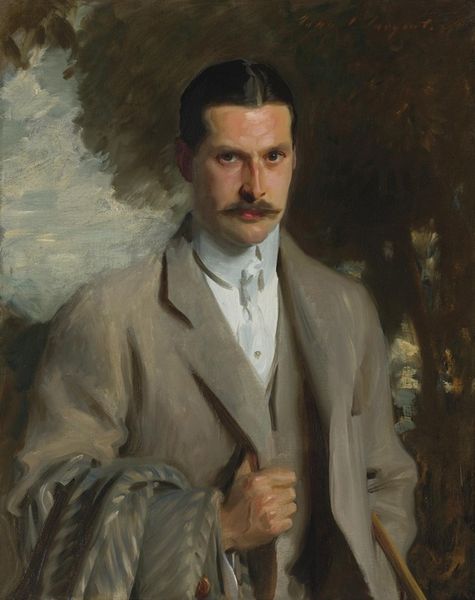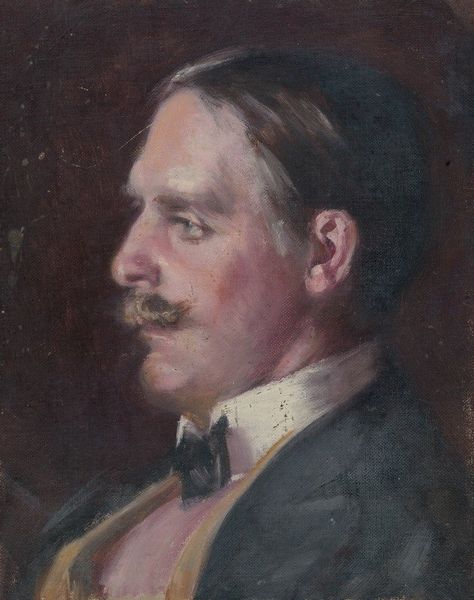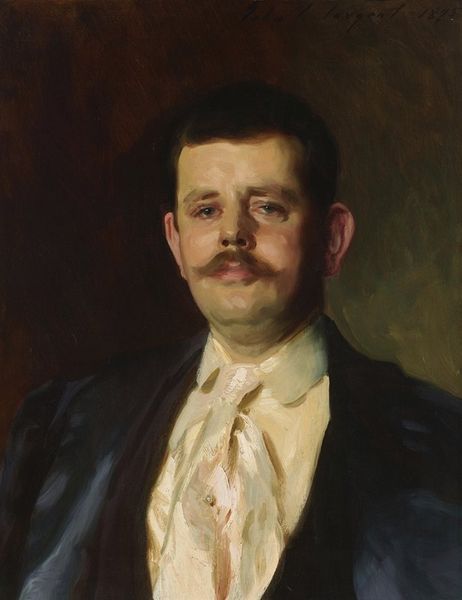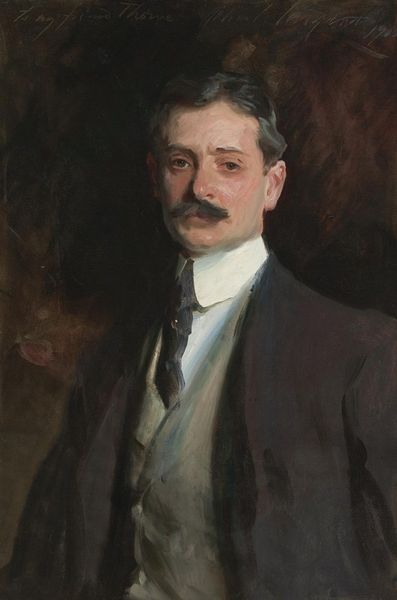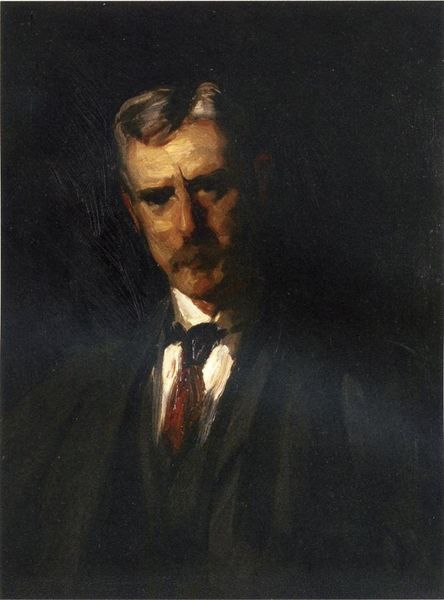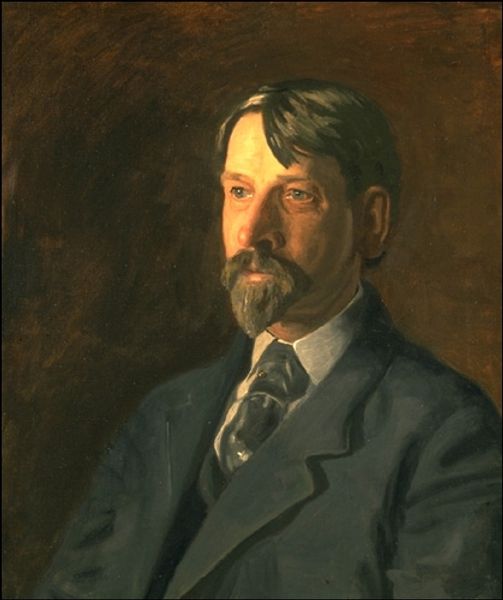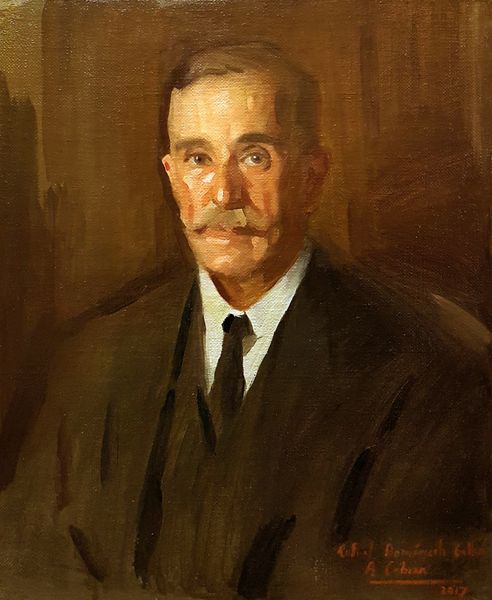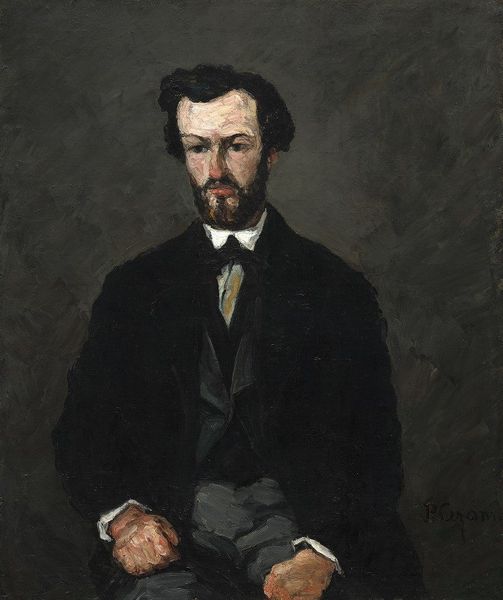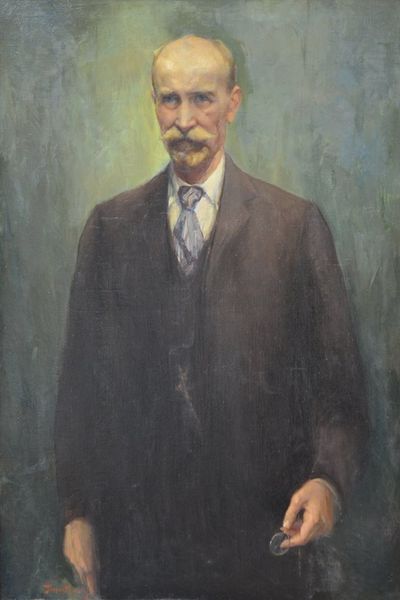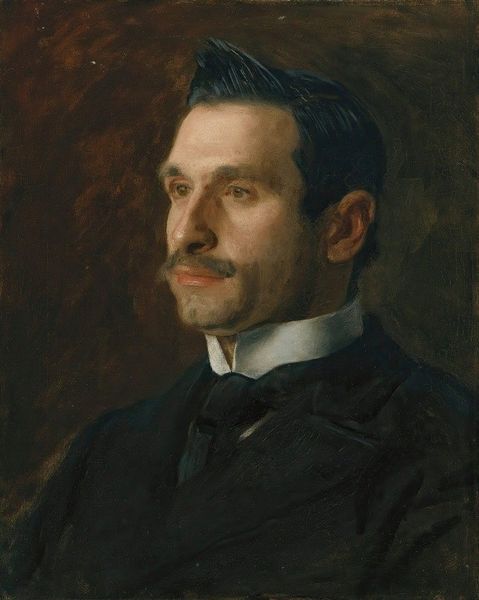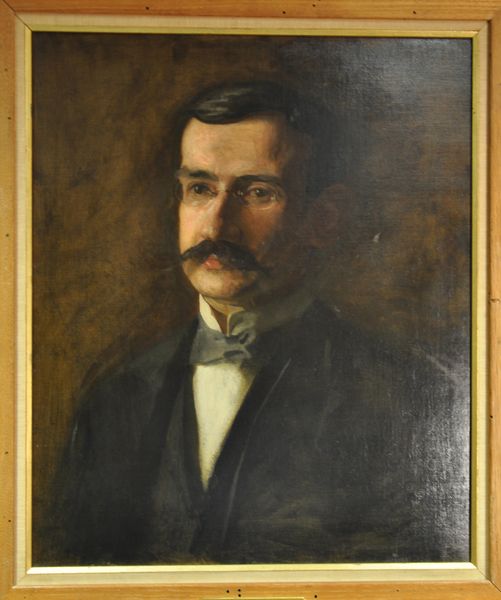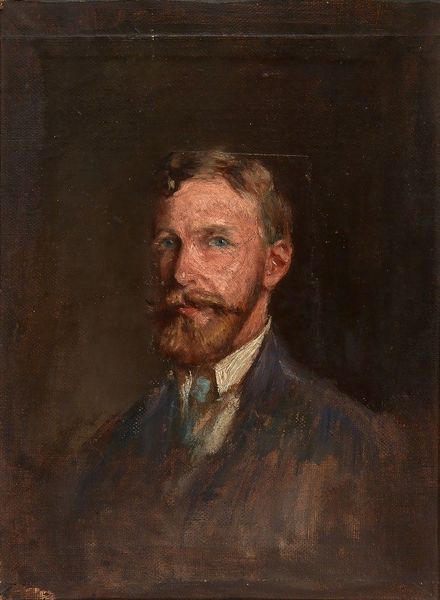
Copyright: Public domain
Editor: This is Thomas Eakins’s portrait of Ernest Lee Parker, painted around 1910 with oil. The muted palette gives it quite a somber mood. What do you see in this piece, something perhaps beyond its surface appearance? Curator: Indeed. Consider the glasses: in this era, they were more than vision aids; they were nascent symbols of intellect and respectability, even modernity. But there's a duality: the lenses simultaneously clarify and create a barrier. How does that sit with you? Editor: I never considered that they would act as barriers! Now, when I look, he seems quite distant. What did wearing spectacles convey back then? Curator: In a culture transitioning to industrialization and valuing specialized knowledge, such an accessory became a visible marker. They signify learnedness, the studied gaze - essential for professions rising in prominence then, such as science or engineering. Note his restrained posture as well – what feelings does it bring up in you? Editor: He seems very proper, reserved even, like he has to act in accordance with what his glasses may symbolize to others. I wonder if he felt any pressure to perform intellectuality, even? Curator: Perhaps. Eakins subtly captures that tension—the individual behind societal expectations. Through pose and brushstroke, we're presented not just a likeness but an insight into turn-of-the-century ideals concerning perception and identity. Editor: So it is like looking into a man but also at society and what society wanted him to be through what he wore and how he acted. That gives me a lot to consider; thanks.
Comments
No comments
Be the first to comment and join the conversation on the ultimate creative platform.
